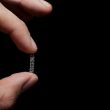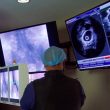The recommended treatment for ST elevation acute myocardial infarction (STEMI) is early PCI, typically stenting. However, stent implantation always involves the risk of intravascular complications, such as stent thrombosis or restenosis. Sometimes stable flow is restored to the target vessel after initial PCI and we can omit stenting when there is no angiographically significant residual...
Wire Jailing at Side Branch to Prevent Occlusion After Main Vessel Stenting: Should It Be the Standard of Care?
While the ideal treatment for coronary bifurcation is provisional stenting, this can be associated with side branch occlusion, which leads to severe adverse events. To prevent this complication, several treatments have been proposed. One of them is wire jailing at side branch before stent implantation in the main vessel. However, the actual benefit of this...
Drug Eluting Stents: Does Strut Size Matter?
The benefit of first-generation Drug-Eluting Stents (DES) over Bare Metal Stents (BMS) is largely known. Moreover, technological developments have led to reduced strut size, biodegradable polymers, and new scaffolds, which in turn have led to improved outcomes. These are known as ultrathin stents, and its struts measure between 70 and 100 microns, which contributes to...
Ticagrelor Monotherapy after 3 Months: Is the Current Strategy Worth Changing?
Dual antiplatelet therapy (DAPT) after PCI with DES has shown noticeable reduction of thrombotic events, especially in acute coronary syndromes (ACS). However, this therapy encompasses increased bleeding, especially in elderly patients increasingly undergoing percutaneous intervention. Even though most bleeding events might not be fatal (many of them are mostly digestive) they do involve higher hospitalization...
Abbreviated DAPT in ACS: The End of Clopidogrel Monotherapy?
Compared with patients with chronic coronary syndromes, patients with acute coronary syndromes (ACS) are more likely to suffer from long term major adverse cardiac events (MACE). To prevent this, both the American and the European guidelines recommend prolonging dual antiplatelet therapy (DAPT) in this population for at least 12 months. However, in patients with certain clinical...
Zwolle Score: Can a Risk Score Decide Where STEACS Patients Should Stay?
The mortality of ST-segment elevation acute coronary syndromes (STEACS) has decreased thanks to improved reperfusion times (fibrinolysis or primary angioplasty), so that, in daily practice, there is a greater number of patients with stable acute myocardial infarction (AMI). This clinical stability and a low rate of complications raise the question of whether performing triage is...
MitraClip Failure: What Should We Do?
Currently, edge-to-edge therapy with MitraClip has demonstrated efficacy and safety for the treatment of patients with degenerative or functional mitral regurgitation who are at high risk for surgery. However, device-related complications are still present—though their frequency is subsiding due to greater experience, 3D doppler echocardiography development, and technological advancements: loss of leaflet insertion (LLI), single...
Is Epinephrine Superior to Adenosine in No-REFLOW?
In patients with acute coronary syndrome, no-reflow prevalence is 32%. Different drugs—such as adenosine, verapamil, nitroprusside, or nicardipine— have been used for its intracoronary treatment, thus resulting in arterial hypotension. The aim of this randomized study was to determine the effectiveness of the use of intracoronary epinephrine vs. adenosine in normotensive patients. The primary endpoint...
IVUS in Acute Coronary Syndrome: A New Requirement?
The use of intravascular ultrasound (IVUS) has seen exponential growth across registries over the years, combined with mounting and increasingly robust evidence. The fact that it will enable us to characterize plaque morphology and extension prior the intervention, and even assess stent expansion post intervention, has turned it into a pillar of our efforts to...
Clnical Practice Dissociated from Study Outcomes: Bad News for Our Patients?
Differences in patient characteristics, changes in treatment algorithms, and advances in device technology, together or separately, might limit the applicability of older randomized trials to contemporary clinical practice. In this case, we look at patients and devices used in the contemporary clinical practice vs. those in the EXTEND DAPT. These differences were associated with attenuated...









